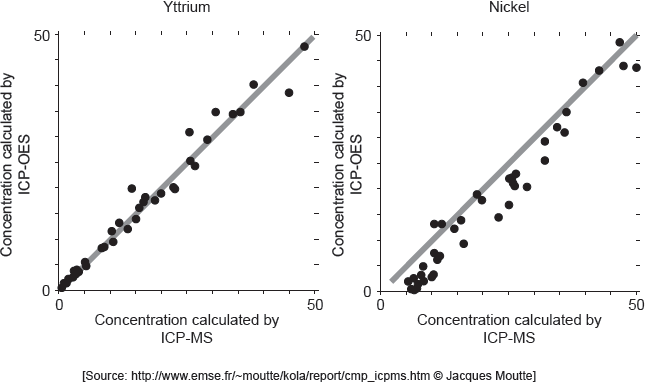| Date | May 2019 | Marks available | 1 | Reference code | 19M.3.sl.TZ1.3 |
| Level | SL | Paper | 3 | Time zone | TZ1 |
| Command term | Suggest | Question number | 3 | Adapted from | N/A |
Question
Lithium has many uses.
The emission spectra obtained by ICP-OES for a mixture containing the isotope 6Li (Li-6) and naturally occurring lithium (Li (N)) is shown.
Identify the type of bonding in lithium hydride, using sections 8 and 29 of the data booklet.
Explain why lithium is paramagnetic while lithium hydride is diamagnetic by referring to electron configurations.
Suggest why ICP-OES does not give good quantitative results for distinguishing 6Li from naturally occurring lithium.
Suggest a better method.
Lithium is obtained by electrolysis of molten lithium chloride. Calculate the time, in seconds, taken to deposit 0.694 g Li using a current of 2.00 A.
Q (charge) = I (current) × t (time)
Markscheme
ionic [✔]
lithium has an unpaired electron [✔]
all electrons in lithium hydride are paired [✔]
Note: Award [1 max] for correct electron configurations of Li AND Li+ AND H- without discussion of pairing.
emission spectra of both «6Li and natural Li» give same colour/produce same «range of» wavelengths
OR
they have same electron transitions/same nuclear charge [✔]
Note: Accept “the spectra are almost identical”.
ICP-MS [✔]
Note: Accept “MS/mass spectrometry”.
n«= » = 0.100 «mol» [✔]
«t = =»
4830 «s» [✔]
Note: Accept “4820” OR “4825 «s»”.
Award [2] for correct final answer.
Examiners report
Many students correctly used the data tables and chart to deduce the bonding is ionic.
Only a few students were aware of the connection between electron pairing and magnetic properties.
Surprisingly few candidates referred to the fact that the two spectra shown are almost identical.
Again relatively few students were able to suggest ICP-MS as a more appropriate alternative.
About half the candidates who attempted this were able to calculate the amount of lithium being formed and hence the time required.


